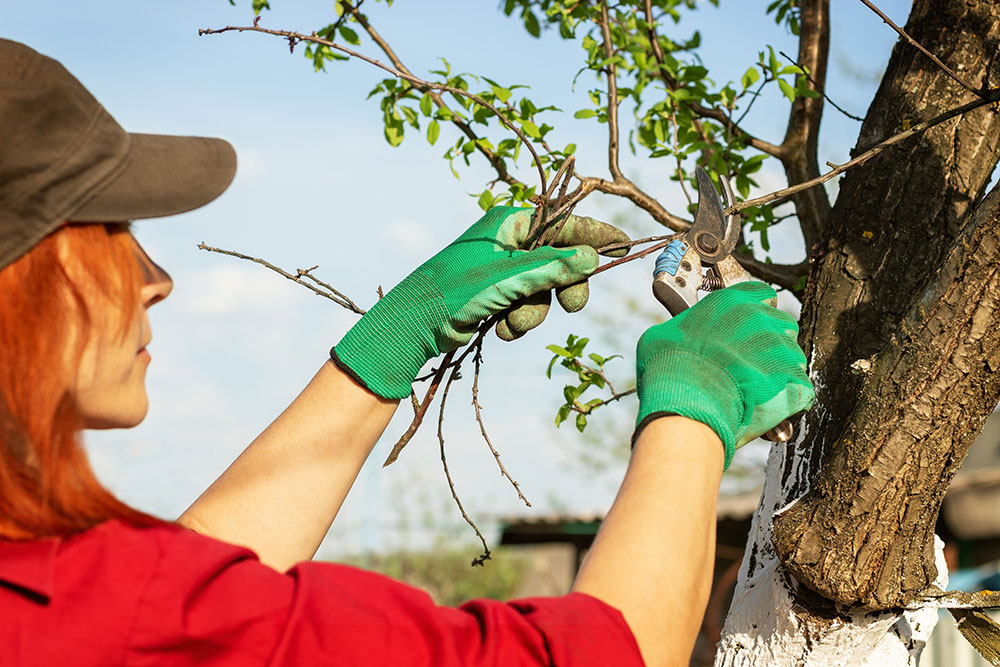The fall season, pleasant weather, Halloween, stunning sunsets, falling leaves, and, more importantly, a time to prune trees. For most people, fall is the perfect time for pruning trees and preparing them for the next spring. But contrary to popular opinion, fall is not the best time to be pruning trees. Experts suggest that, unless you have an absolute reason to be pruning and trimming your trees in the fall, you should consider waiting until the start of spring, when the tree is actively growing. In addition, not all trees can be pruned in the same month; the right time for pruning trees drastically depends on the type of trees. If you know little to nothing about pruning trees, we hope this guide can be of use.
What is tree pruning?
Pruning is the selective removal of tree branches and twigs. It can be done for several reasons, such as:
-To remove dead, dying, diseased, or dangerous limbs
-To improve the tree’s structure
-To direct growth
-To increase light and air penetration to the center of the tree
-To reduce wind resistance
How do you know when to prune your trees?
The best time of year to prune most trees is late winter or early spring before new leaves appear. This allows you to see the branching structure more easily and make cuts without damaging the plant. Spring is also a good time because it gives the plant time to heal before the hot summer months. Some trees, such as maples and birches, bleed sap when pruned late winter or early spring. This isn’t harmful to the tree but can be messier than pruning at another time of year. If you’re concerned about this, wait to prune these trees until just after they’ve leafed out in spring.
Pruning while the tree is actively growing stimulates new growth. This can be good if you’re trying to direct the plant’s growth but may not be ideal if you’re trying to reduce its size. Trees prone to aggressive new growth after pruning include elms, oaks, and willows. For these species, it’s best to prune in late winter or early spring before new growth begins.
Trees that bloom in spring (such as dogwoods, lilacs, and magnolias) should be pruned immediately after they finish flowering. This allows them to form next year’s flower buds while there are still leaves on the plant to provide energy for the process. Summer-flowering trees (such as crepe myrtles) should be pruned in late winter or early spring, so they have time to heal before hot weather sets in.
Prune fruit trees (apples, pears, plums, cherries, peaches, and nectarines) in late winter or early spring before new growth begins. This will help prevent disease and encourage fruit production.
When not to prune
Don’t prune trees in late summer or early fall. This can stimulate new growth that won’t have time to harden off before cold weather sets in, leading to damage or even death of the plant. Fall is also a prime time for disease transmission, so pruning at this time of year can put your tree at risk.

Pruning too much
It’s possible to over-prune trees, which can be just as harmful as not pruning them. When you remove more than 30% of a tree’s canopy, you put it under stress and make it more susceptible to disease and insect infestation. If you need to remove more than this, it’s best to do it over the course of several years.
When pruning a tree, make sure you assess the tree’s overall health. If it is sick or dying, it may not be worth saving. The second step is to determine what you want to achieve by pruning. Are you trying to improve the tree’s structure? Direct its growth? Once you know your objective, Identify which branches need to be removed. Dead, dying, diseased, or dangerous limbs should be your top priority. Also, make sure you have the proper tools for the job. A good quality pruning saw, and shears will do the trick for most trees.
When pruning any tree, sterilize your tools beforehand with rubbing alcohol or a bleach solution (one-part bleach to nine parts water). This will help prevent the spread of disease from one plant to another. Also, try to make clean cuts just above a node (the point where leaves attach to the stem). Avoid leaving stubs, which can lead to disease and insect problems.
Pruning is a delicate process that, if done incorrectly, can damage or even kill your trees. That’s why it’s important to know when and how to prune properly. The best time of year to prune most trees is late winter or early spring before new leaves appear. This allows you to see the branching structure more easily and make cuts without damaging the plant. Spring is also a good time because it gives the plant time to heal before the hot summer months. Again, if this is too much for you, consider talking to a specialist.






